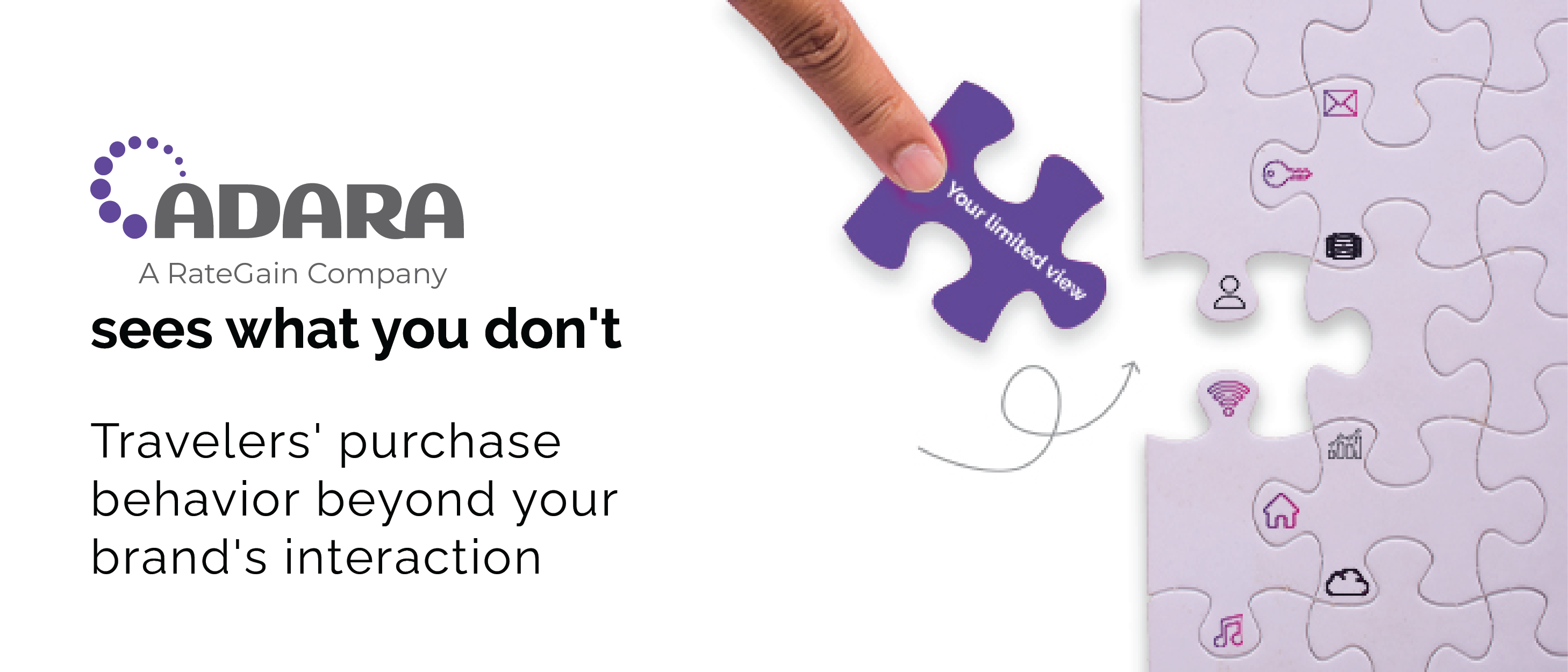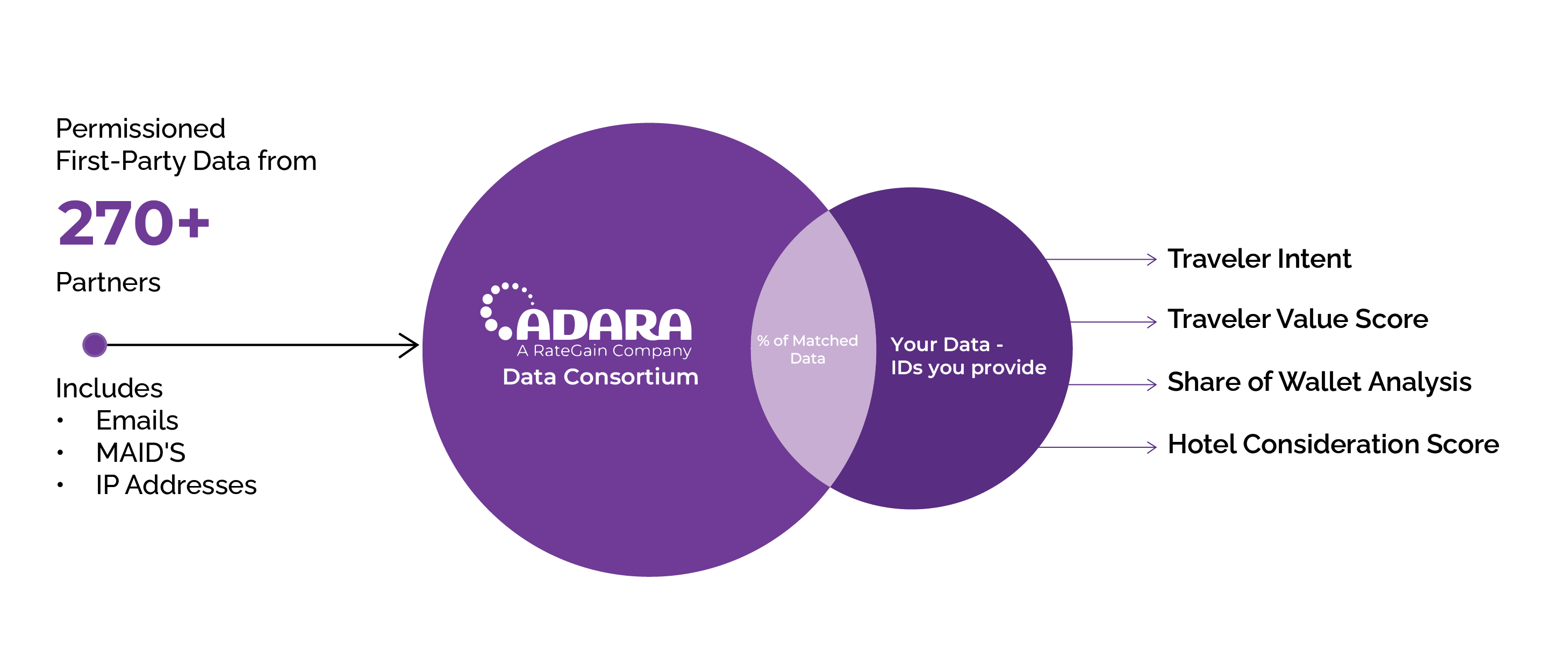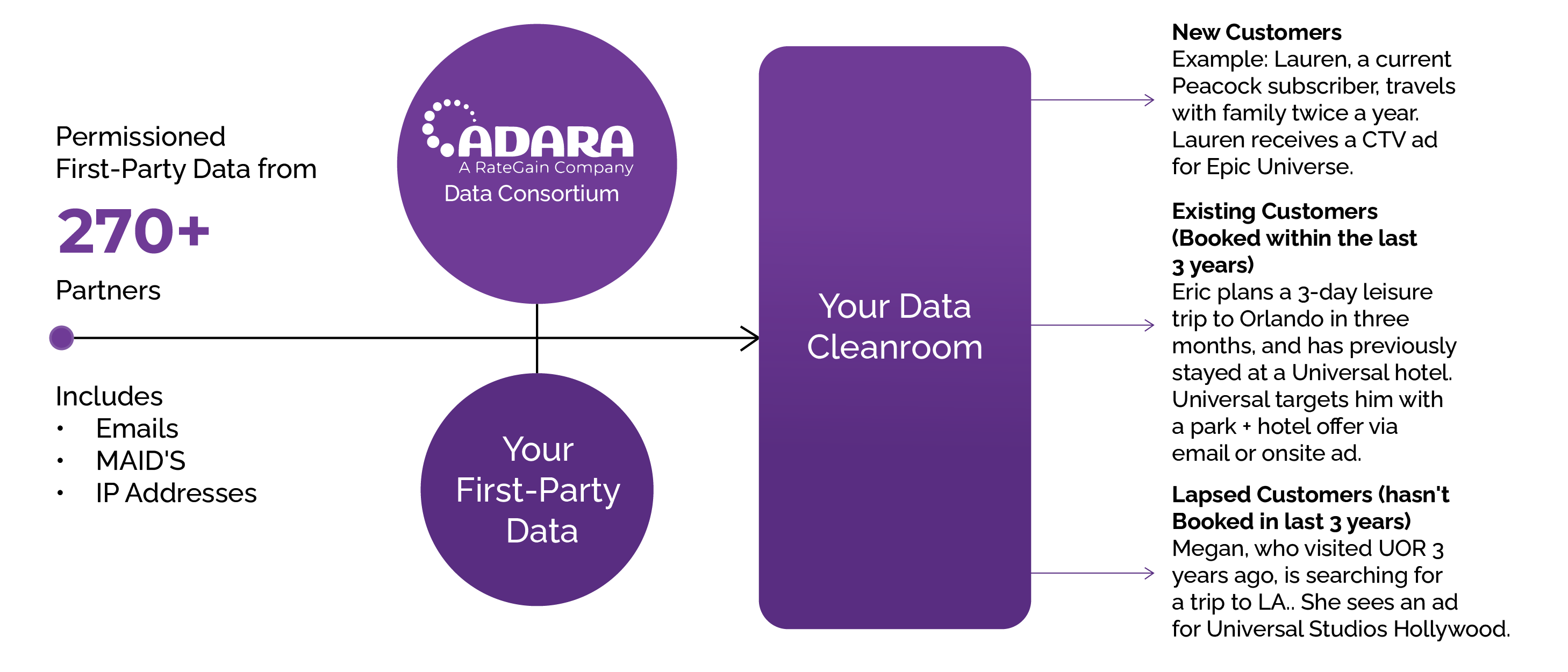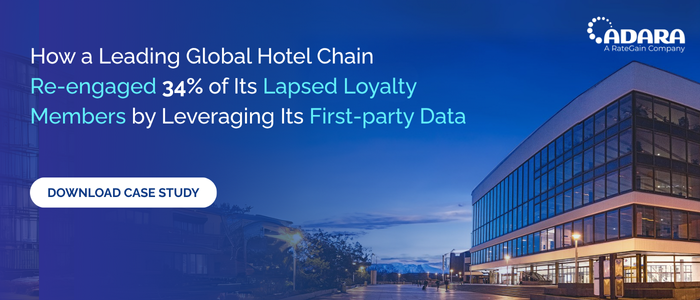What Is Re-Engagement?
Re-engagement is the strategic process of reactivating lapsed or dormant customers, those who may have previously booked with you, enrolled in a loyalty program, or browsed your services but haven’t returned. The goal isn’t just to reconnect, but to do so through meaningful, data-driven interactions delivered at their moment of intent.
Why Re-Engagement Matters
Many enterprises miss critical opportunities to re-engage customers simply because they limit their monitoring to internal channels such as website visits, email opens, or loyalty app usage. This narrow view fails to capture a customer’s full journey, especially when that journey continues outside the brand’s ecosystem.
Without visibility into external browsing and booking behaviors, brands are left making assumptions, asking questions like:
- Is the customer back in the market and ready to purchase?
- Are they actively considering competitors?
- What motivations or life events might be influencing their next trip or transaction?
This information gap often results in missed timing, irrelevant messaging, or worse, losing the customer to a competitor.
Strategic re-engagement changes that. By integrating external intent signals with existing customer data, marketers can anticipate needs, personalize outreach, and intervene at precisely the right moment. This transforms re-engagement from reactive guesswork to proactive precision.
Key Benefits of Smart Re-Engagement
- Boost in return bookings and repeat transactions: By reactivating past customers who already trust your brand, you can generate more bookings at a lower acquisition cost compared to new customer campaigns.
- Reduction in wasted ad spend through targeting: Focus your marketing efforts only on those who are actively considering travel, ensuring every dollar drives meaningful engagement.
- Increased share of wallet: Capture a larger portion of a customer’s travel expenditure by re-engaging them at the right moment, before they book elsewhere.
- Strengthened customer loyalty: Delivering timely and relevant offers builds trust and encourages repeat interactions, making customers more likely to return in the future.
- Higher campaign ROI: Targeted re-engagement leads to better conversion rates, translating to greater revenue for the same or lower spend.
How Adara Makes It Work
Adara powers precision re-engagement by layering real-time travel intent data from hundreds of global brands over your existing loyalty or CRM data. This enhanced view enables you to act strategically.
Layering Loyalty and Intent Data
Combine Adara’s travel data with your first-party data to:
- Spot when a customer is researching or planning again: Adara detects signals such as destination searches, price checks, or browsing competitor sites that fall beyond the brand’s purview.
- Uncover intent signals even outside your own platforms: Even if a customer hasn’t interacted with your brand recently, Adara identifies travel interest based on activity across its global partner network.
- Detect competitor engagement and intercept in real-time: Recognize when your former customer is considering alternative providers and target them with timely, compelling offers.

Share of Wallet Analysis
Understand your true revenue opportunity by evaluating:
- Your share of a customer’s total travel spend: Determine what portion of a customer’s bookings are with your brand versus competitors.
- How much they spend elsewhere: Gain visibility into travel transactions outside your ecosystem to uncover hidden potential.
- Which segments have untapped growth potential: Identify which lapsed customers are still active travelers, allowing you to win them back.
Traveler Value Score (TVS)
TVS ranks travelers based on potential value, allowing you to:
- Prioritize high-impact individuals: Focus your resources on travelers who are more likely to convert and bring in greater revenue.
- Personalize offers to maximize conversion: Tailor promotions based on predicted behaviors and preferences to increase effectiveness.
- Invest budget where ROI is strongest: Allocate marketing dollars to audience segments that promise the greatest return.
Hotel Consideration Score
See which hotel brands and categories a traveler is currently considering:
- Tailor your re-engagement messaging: Deliver offers that align with the specific types of hotels a traveler is actively browsing.
- Offer relevant pricing or upgrades: Respond with compelling deals that directly reflect the traveler’s preferences and behavior.
- Stay ahead of competitors during the booking window: Intervene during the narrow decision-making period before a booking is finalized.

Top Reasons to Adopt Adara for Re-Engagement
- Real-time intent insights beyond your owned data: Expand visibility into customer behavior across hundreds of partner sites and platforms.
- Smarter audience prioritization using TVS and consideration scores: Ensure your marketing efforts are focused on those most likely to return and spend.
- Improved efficiency by focusing on those most likely to convert: Avoid broad targeting by honing in on individuals demonstrating active interest.
- Recovery of revenue that might otherwise be lost to competitors: Win back business from customers on the verge of booking elsewhere.
- A measurable lift in loyalty and repeat business: Strengthen customer relationships by showing up when it matters most with the right message.

Conclusion: Rethink Re-Engagement
Re-engagement is no longer about re-sending emails or relying on outdated behavioral triggers. With Adara, it becomes a strategic growth engine fueled by real-time intent, advanced scoring models, and external behavioral data.
Brands that embrace this approach are not just bringing customers back – they’re bringing them back with purpose, value, and impact. It’s time to stop guessing and start re-engaging intelligently.
